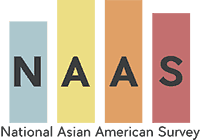Asian American and Pacific Islander voters are an increasingly influential part of the electorate – including in battleground states such as Nevada, Virginia, and North Carolina – and they are leaning more Democratic than they did four years ago.
The Fall 2016 National Asian American Survey (NAAS) – directed by Karthick Ramakrishnan, professor of public policy and political science at the University of California, Riverside – found that several trends the survey first identified in 2008 are continuing:
- The Asian American and Pacific Islander (AAPI) population is the fastest-growing in the country, with the fastest growth by percentage occurring in Nevada, Arizona, North Carolina, Georgia, and Virginia.
- AAPIs now account for 5 percent or more of the eligible voter population in Hawaii, California, Nevada, Washington, New Jersey, New York, Alaska, Maryland, and Virginia.
- The Democratic Party advantage among Asian Americans has grown since 2012. The researchers project that on Election Day, AAPI voters will favor Hillary Clinton by 70 percent to 20 percent for Donald Trump. Clinton is on track to match or beat President Obama’s performance in 2012, when he won a record share of the Asian American electorate.
The survey was founded in 2008, and repeated in 2012 and 2016. It is a scientific and nonpartisan effort to poll the opinions of Asian Americans and Pacific Islanders, and is the only nationally representative academic survey of this population. The multi-campus team of researchers who conduct the NAAS received a $507,132 grant from the National Science Foundation in May 2016 to expand the survey.
The team includes Ramakrishnan, associate dean of the UC Riverside School of Public Policy; Jennifer Lee, professor of sociology at UC Irvine; Taeku Lee, professor of political science and law at UC Berkeley; and Janelle Wong, professor of American students and director of the Asian American Studies Program at the University of Maryland.
Telephone surveys of 2,238 AAPI adults were conducted between Aug. 10 and Sept. 29 in English or languages native to the respondents. Of those surveyed, 1,694 were registered voters. The largest ethnic groups represented in the survey were Chinese, Asian Indian, Filipino, Korean, Vietnamese, Japanese, Hmong, and Cambodian.
Since 2000, the number of AAPI voters has grown by 620,000 in each presidential election cycle, and the number of eligible voters has grown by more than 1.2 million in the same period, the researchers found.
Among other key findings of the survey:
- Asian American registered voters rank the economy, national security, racism, government, and immigration as the most important problems facing the country.
- Health care and education are important personal concerns.
- Asian Americans hold progressive views on many policy issues, including health care, education spending, racial justice, and bans on Muslim immigrants. But, they are split on allowing Syrian refugees to enter the U.S. and are conservative on marijuana legalization.
The researchers also found that “there is a pressing need for Asian American voter outreach,” given the reported lack of contact by parties and candidates. Only 30 percent of AAPI registered voters surveyed said they were contacted by any political party, essentially the same percentage as in 2012. Of those who were contacted, 48 percent of those contacts were from the Democratic Party, 16 percent from the Republican Party, 35 percent from both parties, and 1 percent from a third party.
By comparison, in the 2012 American National Election Study 43 percent of whites, 40 percent of blacks, and 33 percent of Latinos surveyed said they were contacted by a political party. Blacks were more likely to be contacted exclusively by the Democratic Party (60 percent), and whites were more likely to be contacted exclusively by the Republican Party (30 percent).


